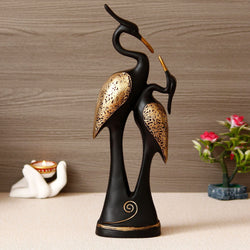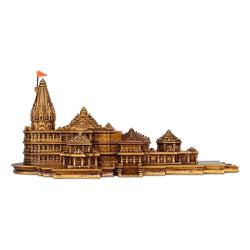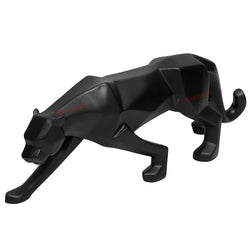In the heart of Madhya Pradesh lies a town that shimmers not just in silk but in centuries-old stories. Chanderi—today celebrated for its ethereal handwoven dupattas and sarees—is more than a textile town. It’s a landscape steeped in mythology, wrapped in divine legends, and woven with threads that remember gods, kings, and cosmic vows.
Let’s journey into the sacred and symbolic world of Chanderi—where every fabric carries the weight of history and the lightness of legend.
Chanderi in the Epics: A Town from the Time of Krishna
Long before it became a celebrated handloom destination, Chanderi—known in ancient times as Chedinagar—was a prominent city mentioned in the Mahabharata. The town was the capital of the Chedi Kingdom, ruled by King Shishupala, cousin to Lord Krishna. While Shishupala's dramatic tale—his birth with deformities, his forgiveness pact with Krishna, and his final downfall—is known, what’s often overlooked is Chanderi’s place in this divine drama.
Fig 1.1: Krishna And Shishupal (Amar Chitra Katha)
The land of Chanderi, touched by these mythic events, has long been seen as sacred. Some accounts suggest that textiles from this region were part of royal wardrobes even in the Mahabharata era, with local lore crediting early Chanderi weavers as makers of divine garments—soft as moonlight, light as air.
The Temple Thread: Maa Jageshwari and the Sacred Weave
No story of Chanderi is complete without invoking Maa Jageshwari, the town’s guardian deity. Perched on a hill, the Jageshwari Temple is one of the oldest shrines in the region and deeply revered by local weavers. Legend has it that a king suffering from leprosy (some say it was Shishupala himself) was healed after worshipping the goddess, cementing her status as Chanderi’s spiritual anchor.
To this day, weavers begin their craft with a prayer to the goddess, and many families believe that the lightness and beauty of the Chanderi weave is a blessing from Maa Jageshwari herself.
Fig:2.1 :Chanderi Jageshwari Mata Mandir
A Fabric That Feels Like Devotion
There’s something almost spiritual about Chanderi fabric. Whether it’s the translucent drape of a dupatta or the gold-dusted motifs on a saree, Chanderi weaves carry a divine softness that feels like a whisper from another time.
This is no coincidence.
Traditional motifs on Chanderi dupattas—like asharfis (coins), lotuses, sparrows, peacocks, and celestial vines—aren’t just decorative. They are symbols rooted in Indian mythology: prosperity, beauty, the feminine divine, and spiritual awakening. When you wear a Chanderi, Something that makes you feel like you’re adorning yourself in metaphor, myth, and meaning.
Fig 3.1: Chanderi dupatta with Flower motif oe butti
The gold zari used in traditional Chanderi is likened to sunlight woven into cloth, while the sheer silk-cotton blends evoke the mist of early morning prayers. This spiritual reverence has allowed the Chanderi weave to survive for over a thousand years—through empires, invasions, and industrial revolutions.
Chanderi Today: A Living Heritage
While mythology lays the foundation, Chanderi’s story is still being written. Today, designers, artisans, and revivalists are bringing new life to the craft—keeping its spiritual essence intact, while infusing it with contemporary relevance.
At Taragram, for instance, each Chanderi dupatta is sourced from weaving communities that continue to respect the sacred rhythm of handloom craft. We see our textiles not just as products, but as cultural emissaries—linking past to present, mythology to modernity.
Final Thoughts: When You Wear Chanderi…
You wear a whisper from the Mahabharata.
You carry the blessings of Maa Jageshwari.
You drape yourself in centuries of sacred craft.
In a world of mass production, a Chanderi dupatta offers something rare: a soulful connection to stories that still matter.
This piece of fabric comes with memory, mythology, and meaning.
Sustainably yours, since 1985.





